
Mackie ProFX6v3 Mixer with Shure SM58LC dynamic microphone. "The Shure SM58 is one of the best microphones in its class. Its frequency response (50Hz-15kHz) is tailored to highlight vocals, hence the bass attenuation from 40-100Hz"
Crown IC-150 Pre-amplifier
Bose Acoustic Wave Music System

(Above) A problem with many modern electronic devices is switching power supplies in this case the little transformer looking thing that plugs into a wall socket and provides 12 volts. Also known as "wall wort". It is poorly shielded (if at all) and the 15 megahertz radio frequency travels down the power cord into the microphone mixer, and from there into whatever it connects to. Audio equipment generlly ignores this radio signal, but the oscilloscope sees it.
As you can see, it is quite a strong signal 137 millivolt peak-to-peak. I wrapped 8 turns of audio cable around a ferrite bar to reduce this common-mode signal.
The horizontal dashed lines are the voltage cursors, we see 137.500 millivolts peak-to-peak.
The vertical dashed lines are the period cursors; we see 66 nanoseconds and it calculates the equivalent frequency of 15.152 MHz. As a check on this, I tuned my radio and found the "birdie" at about 15.060 MHz.
The blue-ish line is the gain and you can see that it is essentially flat from 25 Hz to about 40 kilohertz and that's amazing for audio equipment. It goes nearly to 1 megahertz. Phase starts to lead (capacitive input) after about 20 kilohertz.
Gain is read on the left scale and phase in degrees is read on the right scale. At 180 degrees the system becomes unstable and will oscillate unless the gain is greatly reduced at that phase reversal frequency (which it is).

This is the Crown IC-150 Pre-amplifier, Aux 3 input to monitor output, "flat" button pushed to completely bypass the tone controls.
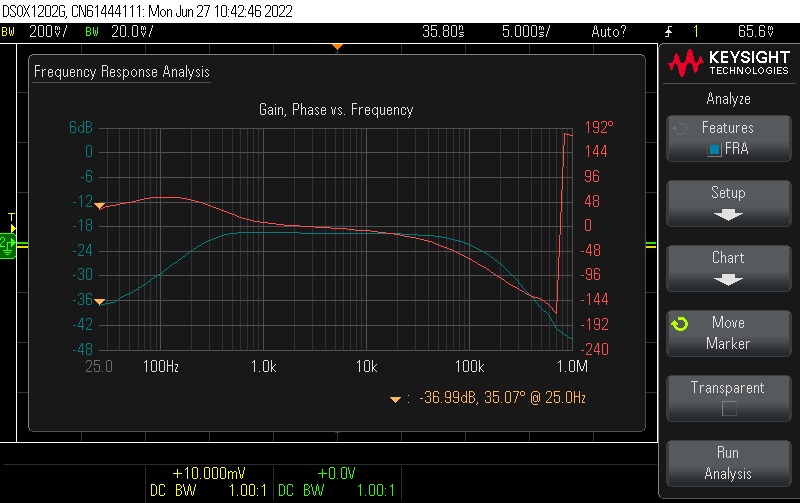
Bass tone control at minimum (full cut).
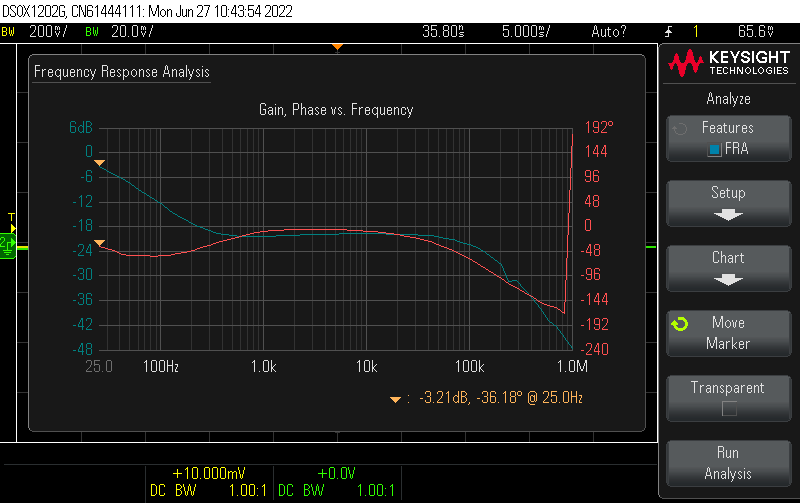
Bass tone control at maximum (full boost).
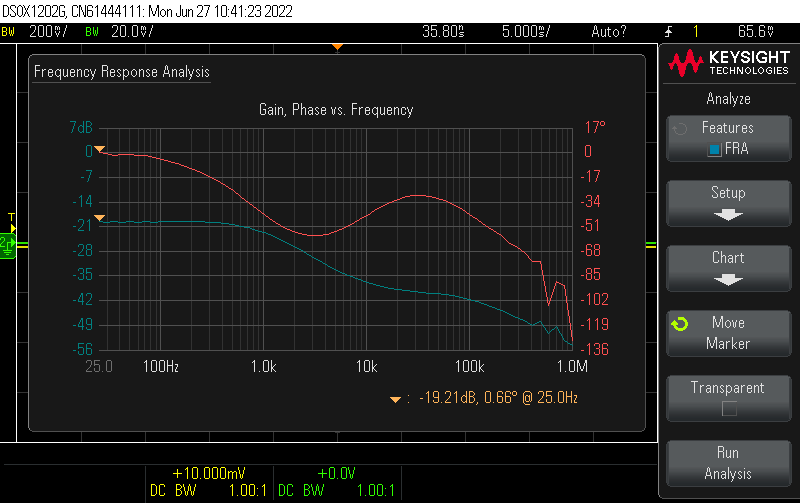
Treble tone control at minimum (full cut).
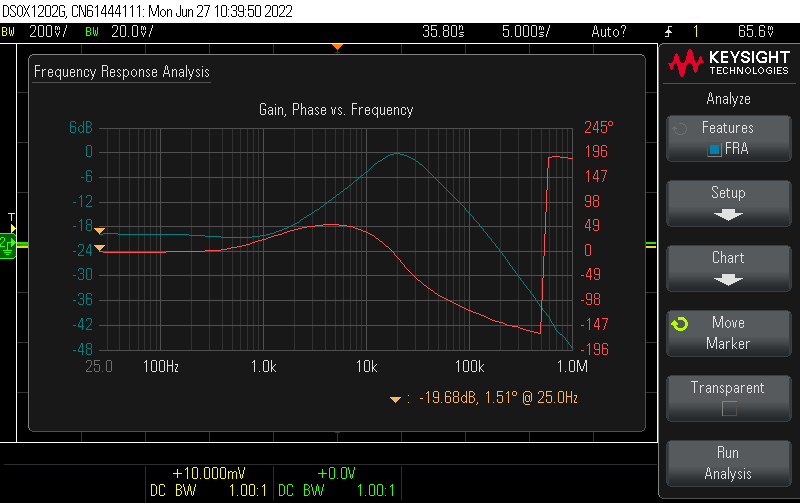
Treble tone control at maximum minimum (full boost).
The idea is that the room will have two or more resonances; the long dimension of the room will have a resonance peak and of course harmonics of that peak. Unexpectedly, a sharp dip exists where multipath reflections cancel right at the microphone.
A small cursor is positioned at the peak of one screenshot and at the dip of the other. You can read the frequency of the cursor at the bottom right of the oscilloscope screenshot.

A peak at 64.6 Hertz. Assuming 1100 feet per second, this comes out to 17 feet. You can see additional peaks at the 2nd and 3rd harmonics (and behond that) as two or three (or more) wavelengths fit in the room.
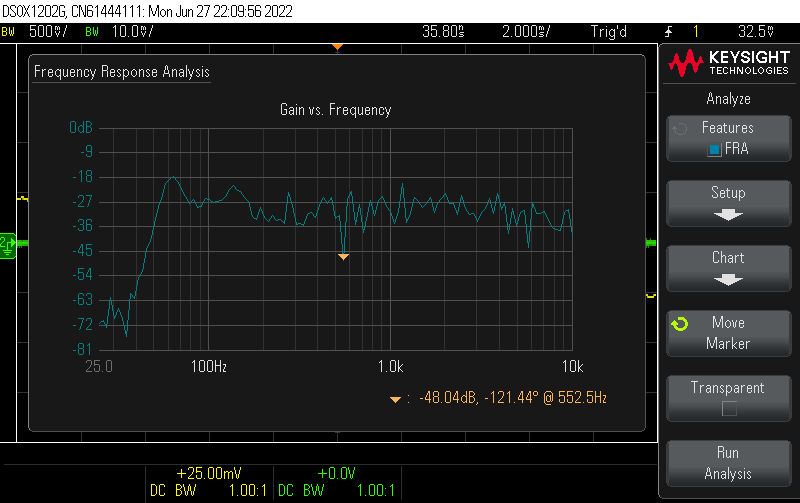
Interesting dip at 552 Hertz. That's multipath cancellation.
The same thing happens with radio waves that bounce off buildings and cancel on arrival at your antenna.